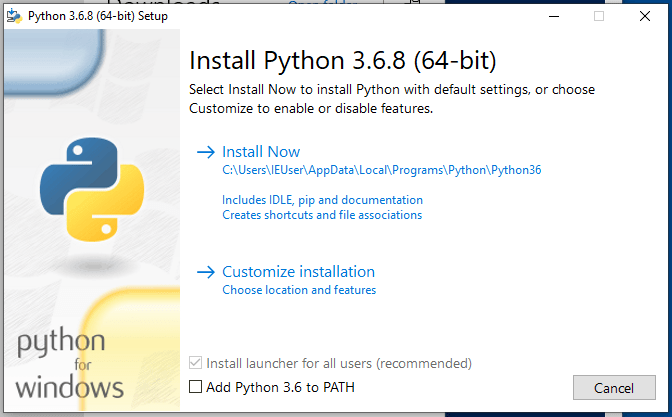Even though lately I've been using more and more Linux platforms, a part of me is still bound to Visual Studio and Windows; however, I do not let this stop me from doing Python development in almost the same way as I do in my Ubuntu partition.
That is why I set out to create this simple guide, for those who are interested in using Python in Windows with a certain degree of control. Plus, I'm sure I'll forget how to do this by the next time I format my computer, so this is also for the Me of the future.
Chocolatey
Chocolatey is "a package manager for Windows (like apt-get or yum but for Windows)", and I'll be using it to install git and make. I use Git for version control and Make to "automate" the somewhat tedious tasks.
To install Chocolatey, start PowerShell with administrative rights and paste this command:
Set-ExecutionPolicy Bypass -Scope Process -Force; iex ((New-Object System.Net.WebClient).DownloadString('https://chocolatey.org/install.ps1'))
Be wary of all the commands you are asked to paste in your PS terminal! Please double-check the command here.
Installing tools
Now, once Chocolatey is installed, close PowerShell and start it again with administrative rights. Only to paste the following command to install both make and git:
choco upgrade make git -y
The -y in between is because I don't want choco to ask me for confirmation... I know what I'm doing.
Once the installation finishes, you should be able to type make in PS and see something like this:
make: *** No targets specified and no makefile found. Stop.
Python
To install Python you have to head to the Python downloads, you can choose whichever version you want; I opted for Python 3.6.8, I downloaded the Windows x86-64 executable installer.
Once executed, the installer will present you with a window like this:
In this case, I selected Install Now, and I made sure to take note of the path displayed in there. Once the installation is done, I had to edit the environment variables, to make them point to where Python was installed, to do this one needs to modify the Path environment variable as follows:
The new paths are:
%USERPROFILE%\AppData\Local\Programs\Python\Python36-
%USERPROFILE%\AppData\Local\Programs\Python\Python36\Scripts
By all means, you should make sure that the path ending in WindowsApps is below the new Python paths.
Now, you should be able to use Python from the terminal (or PowerShell), type python and see something simiar to this output:
Python 3.6.8 (tags/v3.6.8:3c6b436a57, Dec 24 2018, 00:16:47) [MSC v.1916 64 bit (AMD64)] on win32
Type "help", "copyright", "credits" or "license" for more information.
pipenv
Once you have Python installed one is almost ready to go to code, but to keep a neat installation, and to isolate each one of our different projects it is recommended to use a virtual environment manager, and that is what Pipenv is for. To install it, paste the following command in your command line:
pip install --user pipenv
This will install pipenv, but we are still a step away from being able to use it. Since we used the --user flag, the package was installed in a different location that we need to add to our path, very similarily as to what we had to do when installing Python.
The paths to add is:
%USERPROFILE%\AppData\Roaming\Python\Python36%USERPROFILE%\AppData\Roaming\Python\Python36\Scripts
Make sure they are at the top, even after the original Python paths.
Additional tools
There are other tools that I recommend installing, but these may be less important for you:
I hope this post has been helpful, if you have questions or doubts, ask me on Twitter.








Top comments (3)
Thanks for the article, Antonio! I've been looking into automating my Windows installs. I know this is a couple months old, I just wanted to mention that you may want to look into updating your chocolatey calls to use their defined best practices. For example, your command:
choco install -y make gitwhen using best practices would look more like:
choco upgrade make git -yUsing
upgradewill install if it doesn't exist or upgrade if it does, but install will fail if it already exists. Their best practices just has all options at the end of the command, after your subjects. To be even more concise, the guys at chocolatey say you should specify your package... but that seems overkill unless you're targeting versions for deployments.Sorry to be pedantic, I've just been hanging out on their site for the last couple of days and now I'm looking for other peoples' real-world use cases. :)
Fair enough. I'm not a heavy chocolatey user so thanks for the heads up :)
I've updated the snippet.
Hi Antonio, may I ask why you didn't use chocolatey to install Python?